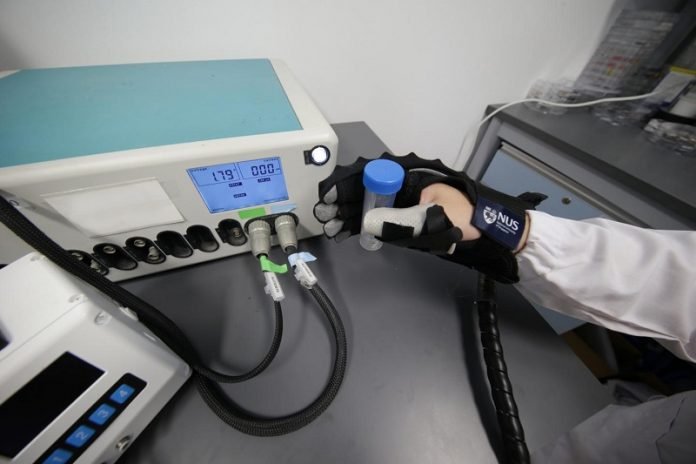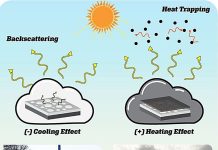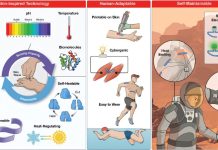
Scientists create a new range of nanomaterial strain sensors that are 10 times more sensitive when measuring minute movements, compared to existing technology.
This is the first step towards improving the safety and precision of industrial robotic arms.
The study was conducted by a research team from the National University of Singapore (NUS), led by Assistant Professor Chen Po-Yen.
Fabricated using flexible, stretchable, and electrically conductive nanomaterials called MXenes, these novel strain sensors are ultra-thin, battery-free and can transmit data wirelessly.
With these desirable properties, the novel strain sensors can potentially be used for a wide range of applications.
Assistant Professor Chen, who is from the NUS Department of Chemical and Biomolecular Engineering, explained, “Performance of conventional strain sensors has always been limited by the nature of sensing materials used, and users have limited options of customising the sensors for specific applications.
In this work, we have developed a facile strategy to control the surface textures of MXenes, and this enabled us to control the sensing performance of strain sensors for various soft exoskeletons.
The sensor design principles developed in this work will significantly enhance the performance of electronic skins and soft robots.”
Precision manufacturing
One area where the novel strain sensors could be put to good use is in precision manufacturing, where robotic arms are used to carry out intricate tasks, such as fabricating fragile products like microchips.
These strain sensors can be coated on a robotic arm like an electronic skin to measure subtle movements as they are stretched. When placed along the joints of robotic arms, these strain sensors allow the system to understand precisely how much the robotic arms are moving and their current position relative to the resting state.
Current off-the-shelf strain sensors do not have the required accuracy and sensitivity to carry out this function.
Conventional automated robotic arms used in precision manufacturing require external cameras aimed at them from different angles to help track their positioning and movement.
The ultra-sensitive strain sensors will help improve the overall safety of robotic arms by providing automated feedback on precise movements with an error margin below one degree, and remove the need for external cameras as they can track positioning and movement without any visual input.
“It is a great pleasure for Realtek Singapore to work with Assistant Professor Chen Po-Yen and his team in NUS for the development of wireless sensor modules applicable to soft robots and industrial robotic arms.
Our co-developed wireless sensors with customer designated sensing performance allow the robots to conduct high-precision motions, and the feedback sensing data can be transmitted wirelessly, which cohere to the approaches of Realtek Singapore in wireless smart factory.
Realtek will continue to build up a strong collaboration with NUS and we look forward to bringing the technologies from the lab to market,” said by Dr Yeh Po-Leh, Chairman of Realtek Singapore.
Customizable, ultra-sensitive sensors
The technological breakthrough is the development of a production process that allows NUS researchers to create highly customizable ultra-sensitive sensors over a wide working window with high signal-to-noise ratios.
A sensor’s working window determines how much it can stretch while still maintaining its sensing qualities and having a high signal-to-noise ratio means greater accuracy as the sensor can differentiate between subtle vibrations and minute movements of the robotic arm.
This production process allows the team to customise their sensors to any working window between 0 to 900 per cent, while maintaining high sensitivity and signal-to-noise ratio. Standard sensors can typically achieve a range of up to 100 per cent.
By combining multiple sensors with different working windows, NUS researchers can create a single ultra-sensitive sensor that would otherwise be impossible to achieve.
The research team took two years to develop this breakthrough and have since published their work in the scientific journal ACS Nano in September 2020. They also have a working prototype of the application of soft exoskeletons in a soft robotic rehabilitation glove.
“These advanced flexible sensors give our soft wearable robots an important capability in sensing patient’s motor performance, particularly in terms of their range of motion.
This will ultimately enable the soft robot to better understand the patient’s ability and provide the necessary assistance to their hand movements,” said Associate Professor Raye Yeow.
Robotic surgery
The team is also looking to improve the sensor’s capabilities and work with the Singapore General Hospital to explore the application in soft exoskeleton robots for rehabilitation and in surgical robots for transoral robotic surgery.
“As a surgeon, we rely on not just our sight but also our sense of touch to feel the area inside the body where we operate on.
Cancerous tissues, for instance, feel different from normal, healthy tissue.
By adding ultra-thin wireless sensing modules to long robotic tools, we can reach and operate in areas where our hands can’t reach and potentially “feel” the tissue stiffness without the need for open surgery,” said Dr Lim Chwee Ming, Senior Consultant, Otorhinolaryngology-Head & Neck Surgery, Singapore General Hospital.



